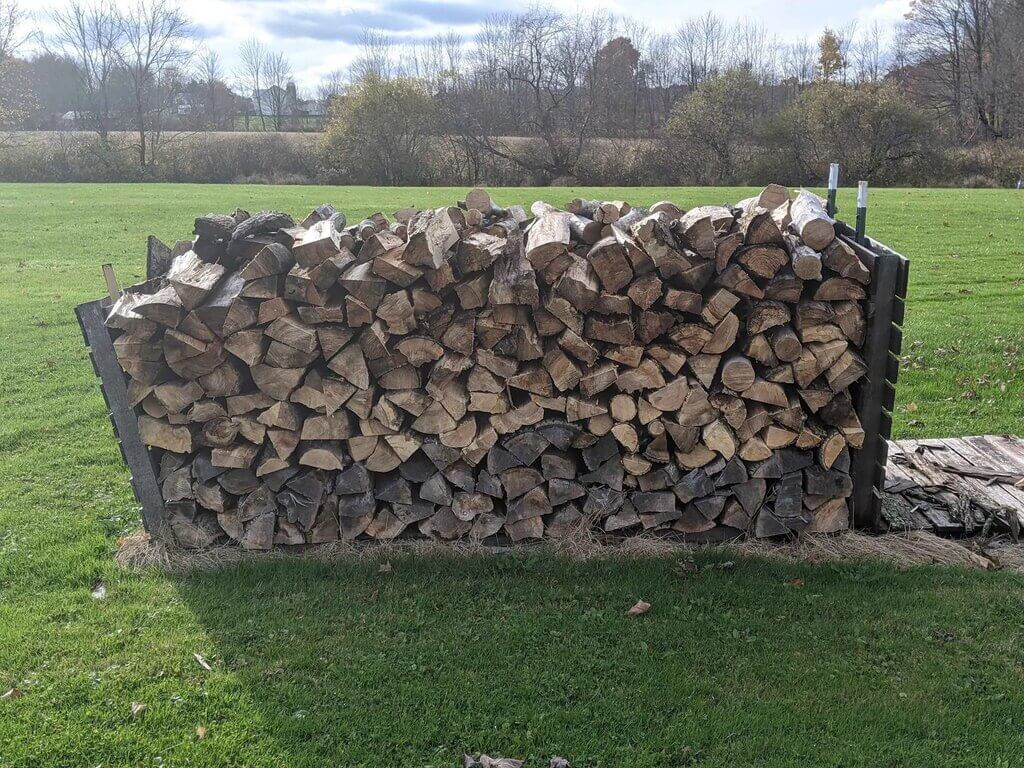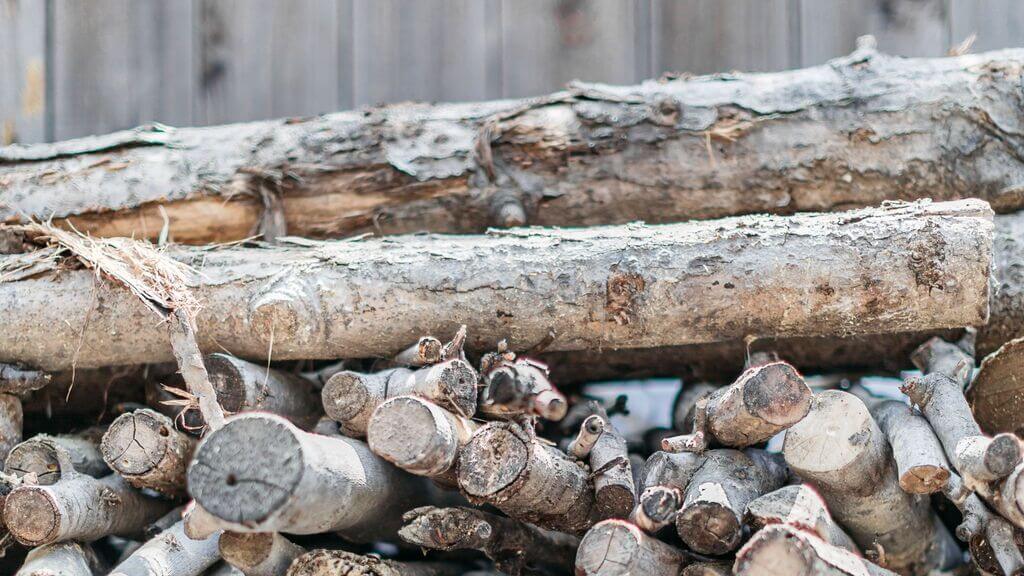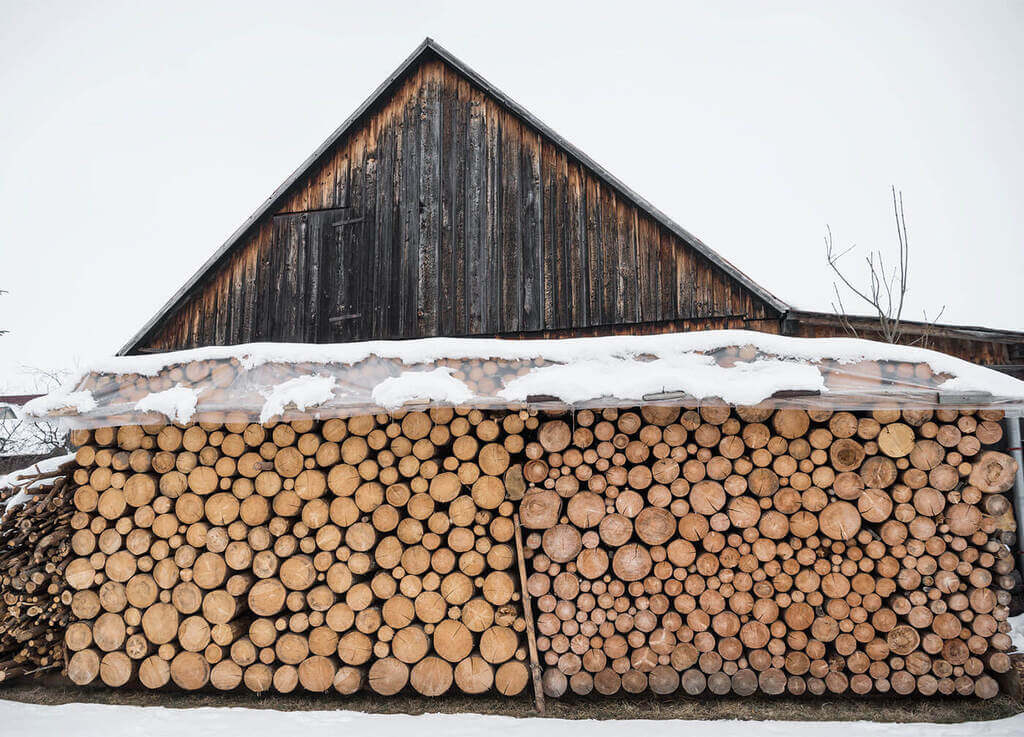Imagine sitting on a chair near your fireplace while reading your favorite book or enjoying a hot cup of coffee. Just by visualizing this, you can feel the cozy and warm feeling of being near a fireplace.
A fireplace is a fantastic way to add additional warmth and aesthetics to your space without spending much. Fireplaces are necessary, especially in the holiday season. From living rooms to bedrooms and dining rooms, you can create a comfy and cozy ambiance just by including a fireplace. You can enjoy a warm space without increasing your heating bill.
However, to have this amazing experience, you have to buy firewood every year. Many of you might already be buying wood but in small amounts. But do you know about the hiked prices of firewood? Yes, there is a huge difference in the overall cost of wood, especially when you buy them in bulk and in smaller bundles. Plus, the weather also affects the pricing of firewood as, during the cold months of winter, you can see the high prices as at this time, many people are using them to keep their homes warm.
So if you’re also one of the people who love a warm atmosphere and want to stay near fireplaces, you should always buy larger amounts of wood in cords. Yes, in CORDS!
How Much Is a Cord of Wood?
This line surely comes into your mind after reading the above para, right? You’re not alone; many people don’t know this. You might be wondering why it is important to buy wood in cords? Is it necessary? Yes, because if you don’t want to be ripped off or pay more for your woods, you have to know the volume of a cord of wood and its right pricing.
Today in this blog, we will tell you everything about how to buy wood in cords and how much a cord of wood costs. We’ve described all the factors affecting the cord of wood price and important things to consider before buying wood for your fireplace.
What Is A Cord Of Wood?

The standard unit of measuring a stacked pile of firewood is a ‘Cord.’
A cord is an official measurement unit, but it can change in some regions, and it can also be used differently by different firewood dealers. Many sellers and buyers use other words and terms that refer to different quantities of firewood, such as running cord, face cord, stove cord, standing cord, or bush cord.
To measure the quantity of firewood properly, all the woods should be stacked as tightly as possible. After this, the total volume can be measured. So how much is a cord?
The firewood measurement of a cord is about 128 cubic feet. The stack or pile or woods measures about 4 feet high, 4 feet wide, and 8 feet long.
What Is The Volume Of A Cord of Wood?
A tightly, tidy cord of stacked firewood is:
| Imperial: Width = 8 ft. x Height = 4 ft. x Depth= 4 ft. (128 cubic feet)
Metric: W = 122 cm x H = 244 cm x D 122 cm (3.63 cubic meters) |
Though this is the standard measurement, it can vary from supplier to supplier. This happens because wood is generally cut in various lengths, and due to this and uneven stacking, there is a lot of air space remaining in a pile foundation. Do you know that if it was possible to have zero air pockets, a cord of wood would be closer to 90 cubic feet in volume?
For those who are wondering how much does a cord of wood cost? A standard cord of wood weighs between 2000 to 3000 pounds.
That’s why, as a buyer, sometimes it becomes difficult to get the firewood for sale in the right amount. That’s why it is advised to compare cord prices among various suppliers. Try to avoid buying wood in these units:
- Rick cord
- Pick-up truckloads
- Stone cord
- Furnace cord
These terms or units are not as accurate as official standards of measurement. Many dishonest sellers used these words to confuse you. So, don’t get fooled!
Cords of Wood

Most commonly, people prefer to buy the full cord, but you can also buy wood in fractions of a cord as well. Here are their measurements:
Full Cord of Wood:
- Height = 4 feet (122 cm)
- Width = 8 feet (244 cm)
- Depth = 4 feet (122 cm)
- Volume = 128 cu.ft. (3.62 m3)
⅓ Cord of Wood:
- Height = 4 feet (122 cm)
- Width = 8 feet (244 cm)
- Depth = 16-inches (41 cm)
- Volume = 41.6 cu.ft.
One-third of the cord of firewood is also known as ‘Face Cord’ or ‘Rick of Firewood.’ Now you know the full cord and one-third cord, but how much is a half cord of wood?
A half cord of firewood is quite similar to a one-third cord. The only difference is that instead of 16-inches, it has 24-inches (2-feet) for a half cord.
Half Cord of Wood:
- Height = 4 feet (122 cm)
- Width = 4 feet (122 cm)
- Depth = 24-inches (61 cm)
- Volume = 64 cubic feet
Now let’s talk about the average cost of firewood.
How Much Does A Cord Of Wood Cost?

In 2021 the average cord of wood in the US costs around $300.
However, the pricing can be low as $50 and high up to $400 per cord in winter seasons. The cost depends on many factors, such as where you live, weather conditions, and wood type.
Delivery only: Free to $100 (depends on how far away you live from the seller)
Stacking: $20 to $80
Apart from this, if you want your wood delivered and stacked, there are additional costs. Many sellers also charge extra for other conveniences, such as
- Wood cut in short lengths (more labor and cutting involved).
- Wood cut to uniform sizes so that it stacks nicely.
- Wood that is clean.
- Wood that is dry.
Factors Affecting The Price of Cord Of Wood
Now let’s see the main factors that cause the price fluctuation of a cord of firewood.
Location
The first factor is the location, and it plays a big part in how much a cord or rick of wood costs. This also includes the below things:
- Climate
- Fuel prices
- Taxes and fees
- Regulatory burdens
- Level of supply
- Available competition
Delivery
For people who live in areas where there are fewer suitable trees for firewood, there are high chances that the prices are high.
Seasoning
People who frequently use firewood know that the seasoning of the wood can also fluctuate the overall pricing of the wood. How the wood was dried, and the storage conditions are also considered while deciding the price of the cord of wood. When wood is cleaner, more dry, it is more pleasant to use. It also doesn’t contain mud or sand in the bark. Thus, all these factors are important to know while buying the wood for your fireplace.
Different Types Of Wood

If you’ve thought that every type of wood is the same, that’s not true. Yes, it may sound surprising to you, but various types of woods are available in the market. Some of them are better for firewood.
In general, there are two types of wood: Hardwood and Softwood.
Hardwoods are denser, burn hotter, and for a longer time. They also produce less smoke and emit little sparks as compared to softwood. That’s why this type of wood is best for home burning.
Some of the hardwood species are
- Maple
- Beech
- Walnut
- Birch
- Oak
- Dogwood
- Almond
- Alder
- Pecan
- Birch
While on the other hand, softwoods are cheaper but burn much faster than hardwoods. Plus, they also produce a lot of smoke and sparks. So next time, if your wood is showing these signs, it is softwood.
Fortunately, there is an easy way to distinguish between hardwood and softwood. All you need to do is to hold them in your hands and feel their weight. The heavier piece of wood is Hardwood!
Softwood species are
- Red cedar
- Spruce
- Larch
- Juniper
- Pine
- Balsam
Also, there is a notable price difference between both types of wood. Due to the many benefits of hardwoods, they are a bit on the expensive side. On average, you can get hardwoods for between $300-$450 per full cord for Oak or Maple.
On the other hand, softwoods such as Pine or Juniper come in the price range of $200-$250 per cord. There is also a “Mixed” type of wood (hardwood and softwood). They also come at a lower price.
So next time when you go firewood shopping, don’t forget to check the type of wood. So that you don’t end up with softwood at the cost of hardwood.
How To Properly Store Firewood?

After deciding what type of wood you need, there is another question: how to store them correctly?
Here are some ways you can store and keep your cord of firewood safe.
Closed Space
Stacking is the best option if you’ve bought dry and split wood. Decide the place carefully where you want to stack it. The space should be clean, convenient to reach, and be free of any moisture throughout storage.
Open Space
If you’ve bought green wood, which means the wood still has some moisture. First, split them into smaller pieces and store them in an open space. This way, they’ll get good airflow and will dry fast.
You can also use firewood holders and racks for storing your woods either outdoors or indoors.
Bonus Tips
For the longevity of your firewood, keep below things in mind:
- Always split the woods before storing them in stacks. This way, they dry faster and burn perfectly.
- While storing the firewoods, alternate their direction. Keep some woods in a row facing you and store the next row of woods having tips facing right to left. This will create some air gaps between the pieces.
- To keep your woods dry, keep the base of the stack away from the ground by about six inches. It also keeps away termites and borer insects.
- Avoid storing them near or in between trees.
The Bottom Line
Whenever you plan to go for firewood shopping, get it measured by a unit called a “cord.” also, do check the sizes and type of woods. Depending on your current location, you may get the option to buy firewood as a full cord or fractions of a cord.
If possible, check and see the firewood in person. This way, you can get the best quality and that too in the right price range. Don’t forget to compare the prices of different wood sellers. Make sure to buy your firewood from a licensed and reputable dealer.
So, this is all about what cord is, how much is a face cord of wood and types of firewoods. Follow the storage tips and methods that we’ve mentioned in this guide to keep your firewood dry and enjoy a warm, cozy atmosphere in your home.
I hope this blog has helped you determine how much is a cord of firewood and how to store them properly. Also, don’t forget to share this blog with your friends and family so that they can get the right type of firewood for their fireplace.
Discover More:-

